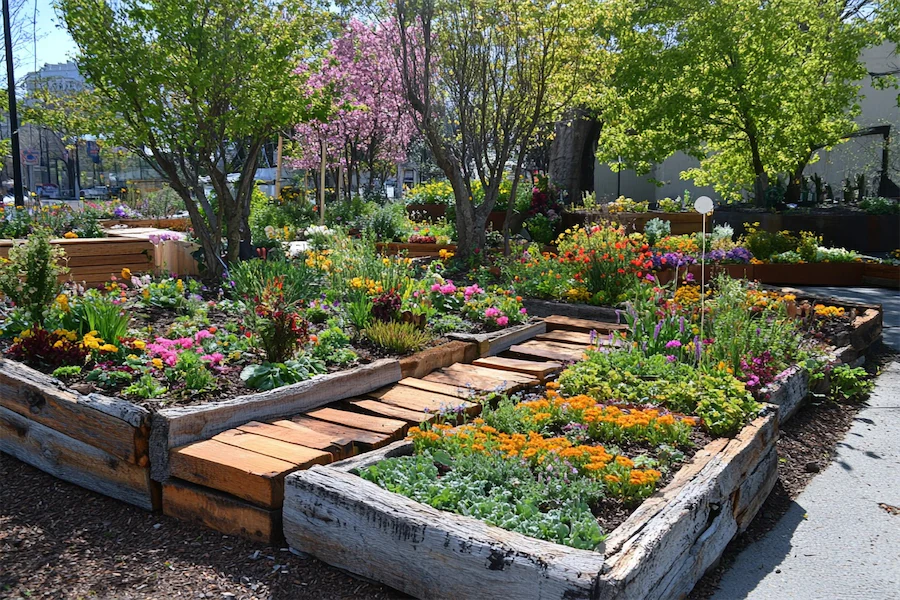An edible garden seamlessly combines aesthetics with functionality by incorporating plants that are both visually appealing and provide consumable yields. This approach, often referred to as “foodscaping,” allows gardeners to maximize space and resources, creating landscapes that are as nourishing as they are beautiful.
History and Origins of Edible Gardens
The practice of integrating edible plants into ornamental landscapes dates back centuries, with historical examples found in medieval monastic gardens and traditional cottage gardens. In the 1980s, landscape designer and author Rosalind Creasy popularized the term “edible landscaping,” advocating for the use of food-producing plants in place of purely ornamental species. Her work highlighted the potential for gardens to be both productive and visually engaging.
Key Features of Edible Gardens
Edible gardens are characterized by several distinctive features:
- Diverse Plant Selection: Incorporating a variety of fruits, vegetables, herbs, and edible flowers adds visual interest and ensures a continuous harvest throughout the growing season.
- Aesthetic Design: Thoughtful arrangement of plants based on color, texture, and form creates an attractive landscape. For instance, alternating rows of green and dark red lettuces can provide striking contrast.
- Functional Structures: Utilizing raised beds, trellises, and containers not only optimizes space but also adds architectural elements to the garden. Raised beds can organize and easily manage your garden, while trellises support climbing plants like beans and cucumbers.
- Companion Planting: Strategically placing plants that benefit each other, such as pairing nitrogen-fixing beans with heavy-feeding crops, enhances growth and reduces pest issues.
Applications of Edible Gardens
Edible gardens can be adapted to various settings:
- Residential Yards: Homeowners can replace traditional lawns or flower beds with edible plants, creating a sustainable and productive landscape. Incorporating fruit trees, berry bushes, and herb borders can transform a yard into a food-producing oasis.
- Urban Spaces: Community gardens and urban farms utilize edible landscaping to provide fresh produce in city environments, often incorporating vertical gardening techniques to maximize limited space.
- Public Areas: Parks and public institutions can integrate edible plants into their landscapes, offering educational opportunities and promoting community engagement with local food systems.
Considerations When Designing an Edible Garden
When planning an edible garden, consider the following:
- Climate Compatibility: Select plants suited to your local climate and growing conditions to ensure success and reduce maintenance. Consulting local extension services or gardening resources can provide valuable guidance.
- Soil Health: Test and amend soil as needed to provide a fertile foundation for your plants. Incorporating compost and organic matter improves soil structure and nutrient content.
- Maintenance: Be prepared for regular tasks such as pruning, weeding, and harvesting to keep the garden healthy and productive. Implementing mulch can help suppress weeds and retain soil moisture.
- Aesthetic Balance: Aim for a harmonious blend of edible and ornamental plants to maintain visual appeal throughout the seasons. For example, mixing colorful chard or kale with flowering perennials can create a vibrant display.
Conclusion
Edible gardens offer a unique opportunity to merge beauty and utility, providing fresh produce while enhancing the landscape’s visual appeal. By thoughtfully selecting and arranging plants, gardeners can create spaces that are both nourishing and delightful, contributing to personal well-being and environmental sustainability.
